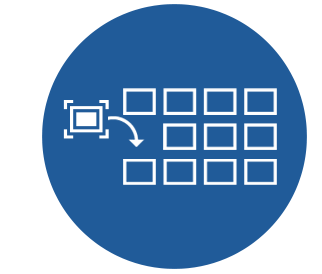There are many benefits of the Oracle database management system that has made it the workhorse of organizations for over 3 decades. It is optimized to run data warehousing, transaction processing, or other intricate queries. What sets it apart from other open-source platforms is its enterprise-grade security coupled with a powerful querying layer, access controls, advanced functions for data analysis, and maximized support. The acceptance of open-source distributed data warehouse systems by businesses has made the combination of a traditional Oracle transactional database and a separate data warehouse into a very popular ETL stack.
Oracle CDC (Change Data Capture) detects and captures mentions, deletions, and any updates that are applied to tables in any Oracle database. This technology is an integral part of any Oracle replication process where CDC identifies and notes changes made to data in a relational format that is appropriate for use in ETL, EAI, and any other applications.
CDC is a cost-effective solution for organizations using the Oracle database. It helps to reduce data warehousing costs since CDC extracts and loads data into the data warehouse or other data storage incrementally in real-time. Since only the changes are taken into account, there is no need to refresh full data in bulk whenever any changes are made at the source.
Evolution of Oracle CDC
When Oracle 9i was released in 2001, users were provided with a feature where tracking and storing changes as they took place was possible. However, there was a major disadvantage here, in that it relied greatly on placing triggers on the tables in the source database. Hence, it was a tedious process for database administrators. When Oracle released the Oracle 10g version, they included a new and overhauled technology that made use of the redo logs of the database. Combined with an in-built Oracle replication tool named Oracle Streams, data changes could be captured and transmitted without going through database triggers.
This new type of Oracle CDC was primarily a log-based version of CDC that did away with the need for changing the structure of the source tables. Even though this technology became very popular, Oracle stopped supporting this CDC after the release of Oracle 12c. This was to push users to switch to the new Oracle replication software, the high-priced Oracle GoldenGate.
Types of Oracle CDC
There are two types of Oracle CDC and organizations have to choose one according to their specific needs.
The first is Synchronous Change Data Capture that is done by using triggers that are inserted into entries in a change table whenever data is modified. These are points that are activated whenever any changes are identified.
The process is initiated by creating a user that will act as a change data publisher. The user must have access to the tables at source and the namespace from where the changes are to be tracked and captured. Next, a changeset and tables have to be created that will subscribe to the changes. For this to happen, that is copy the changes to the target database, a script has to be used that can develop the records and add the data to the destination database.
As discussed before, the disadvantage of this method is that the triggers affect the performance of the source database. However, the next type of Oracle CDC has got around this problem.
The second type of Oracle CDC is the Asynchronous Change Data Capture that is done by redoing logs that keeping a record of all the activities in a database. The advantage here is that this process is carried out without any drop in speed or performance of the Oracle database.
Configuring Oracle CDC
Configuring Oracle CDC can be a long process with a specific set of challenges. This can be circumvented by following the steps given below to complete the activity quickly and efficiently.
- Several configuration changes and user permission changes need to be done to initialize and complete it.
- Oracle CDC revolves only around enabling and capturing change data and developers have to implement the logic for processing the change data and inserting it into the target databases.
- This logic can only be implemented by database administrators who have the necessary programming skills and professional expertise in Oracle.
While the last point is to be given importance, organizations need not carry out the Oracle CDC process manually. There are technologically advanced automated tools that can do CDC speedily without a hitch.
How does Oracle CDC work
Before starting Oracle CDC, it is necessary to set up the required infrastructure and journalizing models. These will help to capture the changes made to the existing databases. Two journalizing models are supported by the Oracle Data Integrator.
One is the Simple Journalizing model where all changes made to an individual data store in a model are identified. The other is the Consistent Set Journalizing model where changes to the data stores in a group are identified. This ensures the referential integrity of the data stores. In this mode, only the group of data stores in the Consistent Set are journalized.
Loading the Oracle CDC on theOracle Data Integrator is not a complex process.

